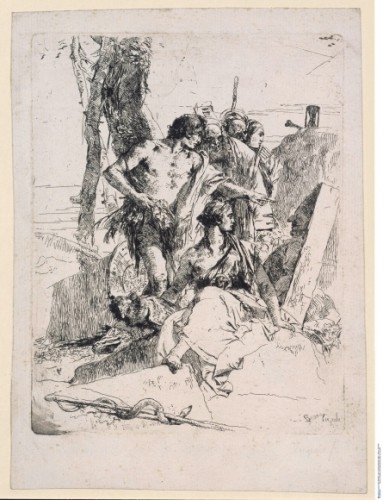The exhibition reacts to a tendency of art life of the last years. On the one hand is obvious nostalgia of Great style – topos of great utopias (The Renaissance, Baroque, up to utopias of Soviet period). On the other hand, the identity of the being tormented artist always corresponds to thesetopos uncooperative – his presence, dialogue with them calls into question integrity and clarity, harmony of Great Style as it is. The situation in principle send out by an era of sixteen century mannerism - time when prevented (but didn't disappear totally, only malformed as in a curve mirror) because of ruinous feeling of the people mislaid before ruins seeming perdurable doctrines . Max Dvorzhak from the article "EI Greco and Mannerism": "Art history as a spirit history " - ways which till that time deal to knowledge and to creation of spiritual culture , were left and the seeming chaos as to us our time is represented to that is result . In the field of this art period, actually not finished yet, the movement which began at the early period of XVI century and it influence never stopped. So, this period unsuccessfully denominated as idiosyncrasy after all naturalistically focused historian of art saw in it only that the majority of artist refused requirement freely to scoop from the nature and was content with the familiar forms and their revaluation as it occurred in art and after antiquity dissolution. But however, the marrow of this period in the history of art fair isn't decreed by it. When the world building that was outlook of the Middle Ages, Renaissance and the Reformation falls, there are ruins. Artists as commonly and most importantly always are too much in all spiritual areas. They lost support normal people which could catch their application. Their vain purpose and their tiny inventions we face a show of exclusive confusion and in motley mix old and new. In the different directions of philosophers, writers, scientists, politicians and artists look for new support and the new purposes, for example in masterly artistry or in the new formal abstractions condensed in the academic doctrines and theories. On the other hand, the subject gains new value. The range of plots extends in all directions, meeting needs of artists to awaken some attention that is to emphasize originality and subjectivity of their relation to world around. " The meaning is not like that the figure quite corresponds to “what we have today?” This situation of sense of nostalgia even surely participation of wide culture. At the same time impossibly to come back to it, to accept it as frictionless. It is also harmonious - it could be delineated by the phrase of an era of baroque of ET in Arcadia ego ("And me in Arcady "). Means that the death stays even in area which is traditionally correlate by the golden Age of mankind. The herald of a distemper and anxiety can be not only death, but also a mask of the joker, his cap. Not casually, on one of engravings Gianbattista Tiepoloarcadian shepherds meet a tomb in which the hero of the comedy del an arte Pulcinella is graved. His presence subverts dogmatic acceptance of any (next) Golden Age of art, forces to treat him critically, according to a commandment "don't create an idol". Therefore humorous inversion of the subject "Et in Arcadia ego" is also included into exhibition construct. Its path is similar to wandering on a labyrinth which becomes the main part of exhibition, along with attributes of vanitas still lifes.




